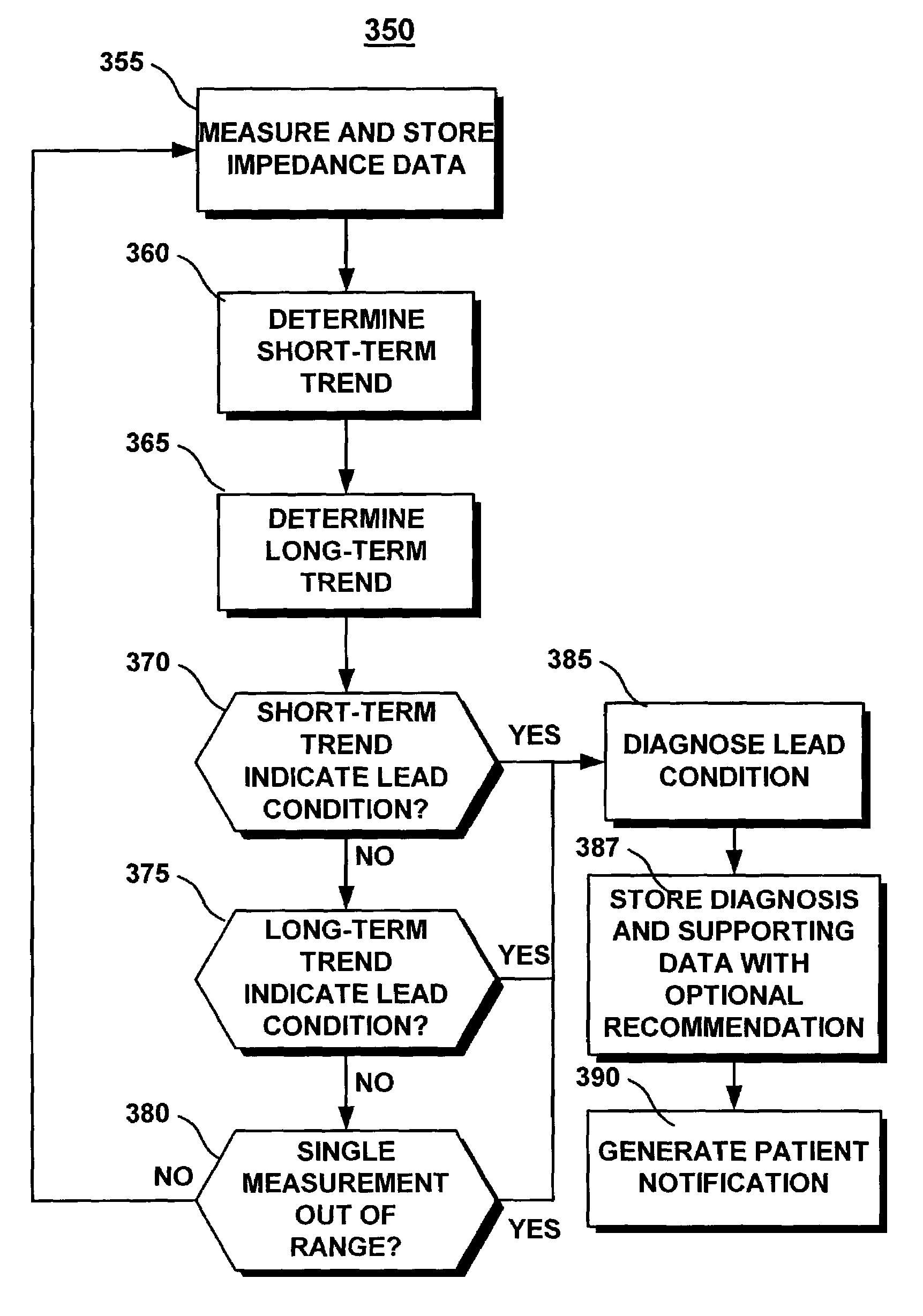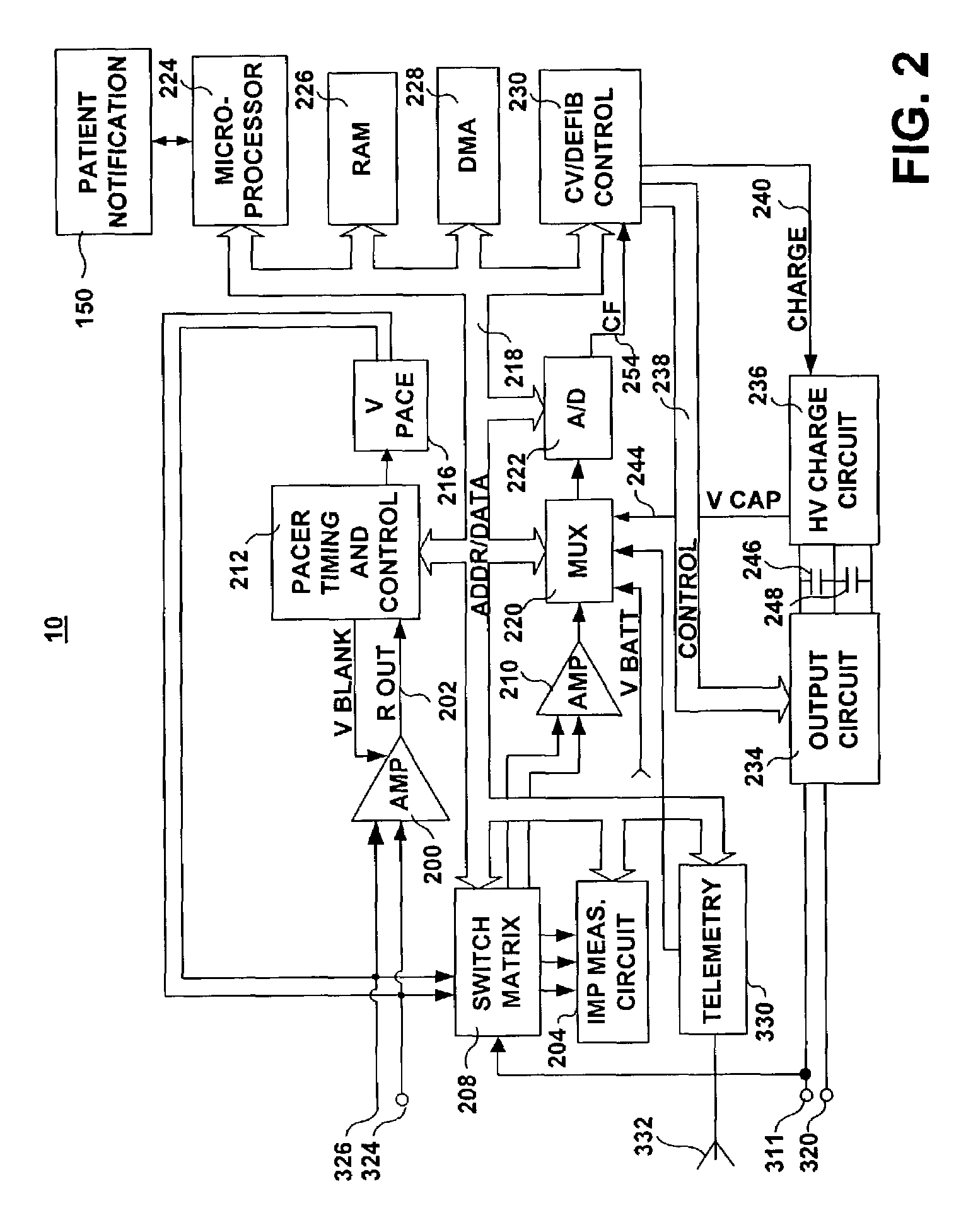Method and apparatus for identifying lead-related conditions using lead impedance measurements
a technology of impedance measurement and lead, which is applied in the field of automatic identification of lead-related conditions, can solve the problems of lead insulation and integrity problems that may become more prevalent, stress on the lead body, and the clinician may be relieved of the burden, avoid unnecessary invasive actions, and high specificity
- Summary
- Abstract
- Description
- Claims
- Application Information
AI Technical Summary
Benefits of technology
Problems solved by technology
Method used
Image
Examples
Embodiment Construction
[0036]The present invention is aimed at providing a system and method for automatically detecting and diagnosing lead-related conditions based on impedance measurement trends. The methods included in the present invention may be used in conjunction with, or incorporated in, an implantable cardiac stimulation device such as a pacemaker or an ICD, or other devices requiring a lead for stimulating excitable tissue. Preferably, methods included in the present invention are fully implemented in an implanted device. Alternatively, methods included in the present invention for analyzing trends in lead impedance measurements that have been stored by an implantable device may be implemented in an external device capable of receiving stored impedance data through uplinking telemetry.
[0037]An exemplary ICD 10 is shown in FIG. 1, with which methods included in the present invention may be used. The ICD 10 is shown coupled to a patient's heart by way a right ventricular lead 16. A connector bloc...
PUM
 Login to View More
Login to View More Abstract
Description
Claims
Application Information
 Login to View More
Login to View More - R&D
- Intellectual Property
- Life Sciences
- Materials
- Tech Scout
- Unparalleled Data Quality
- Higher Quality Content
- 60% Fewer Hallucinations
Browse by: Latest US Patents, China's latest patents, Technical Efficacy Thesaurus, Application Domain, Technology Topic, Popular Technical Reports.
© 2025 PatSnap. All rights reserved.Legal|Privacy policy|Modern Slavery Act Transparency Statement|Sitemap|About US| Contact US: help@patsnap.com



